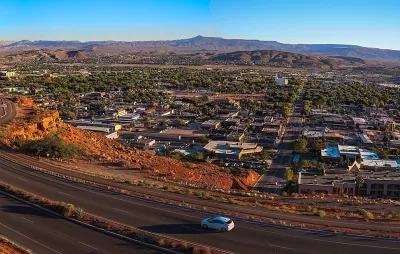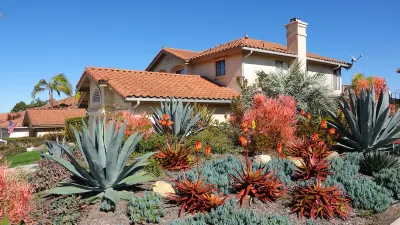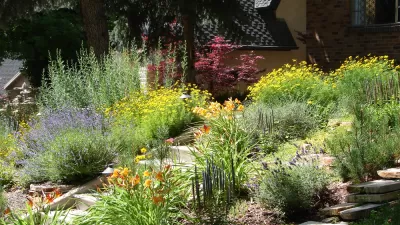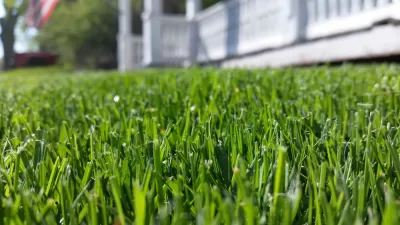Washington County has dramatically reduced per-capita water use, but the region’s explosive growth means increased demand for water.

Washington County, Utah will pay residents to swap water-intensive lawns for drought-tolerant landscaping, reports Morgan Sjogren in Reasons to Be Cheerful.
According to Sjogren, 70 percent of residential culinary water in Utah is used on grass lawns. “By shifting landscaping away from grass and to plants more readily adapted to the climate, the Washington County Water Conservancy District estimates that residents can reduce landscape watering to 11 gallons per square foot annually, compared to 56 gallons for conventional turf.”
Residents who apply for the program have a year to complete projects to receive the incentive of $2 per square foot of converted turf, and $1 per square foot after 5,000 square feet. The program includes stipulations about irrigation, permeable barriers, and types of plants.
Since the program began in late 2022, 2,044 applications have been submitted and 918 projects are complete. Although Washington County has reduced its per capita water use by 30 percent since 2000, rapid population growth means that the county’s overall water use has grown by 15 percent in the same period.
FULL STORY: This Utah County Will Buy Your Lawn to Save Water

Study: Maui’s Plan to Convert Vacation Rentals to Long-Term Housing Could Cause Nearly $1 Billion Economic Loss
The plan would reduce visitor accommodation by 25,% resulting in 1,900 jobs lost.

North Texas Transit Leaders Tout Benefits of TOD for Growing Region
At a summit focused on transit-oriented development, policymakers discussed how North Texas’ expanded light rail system can serve as a tool for economic growth.

Why Should We Subsidize Public Transportation?
Many public transit agencies face financial stress due to rising costs, declining fare revenue, and declining subsidies. Transit advocates must provide a strong business case for increasing public transit funding.

How to Make US Trains Faster
Changes to boarding platforms and a switch to electric trains could improve U.S. passenger rail service without the added cost of high-speed rail.

Columbia’s Revitalized ‘Loop’ Is a Hub for Local Entrepreneurs
A focus on small businesses is helping a commercial corridor in Columbia, Missouri thrive.

Invasive Insect Threatens Minnesota’s Ash Forests
The Emerald Ash Borer is a rapidly spreading invasive pest threatening Minnesota’s ash trees, and homeowners are encouraged to plant diverse replacement species, avoid moving ash firewood, and monitor for signs of infestation.
Urban Design for Planners 1: Software Tools
This six-course series explores essential urban design concepts using open source software and equips planners with the tools they need to participate fully in the urban design process.
Planning for Universal Design
Learn the tools for implementing Universal Design in planning regulations.
Ascent Environmental
Borough of Carlisle
Institute for Housing and Urban Development Studies (IHS)
City of Grandview
Harvard GSD Executive Education
Toledo-Lucas County Plan Commissions
Salt Lake City
NYU Wagner Graduate School of Public Service





























